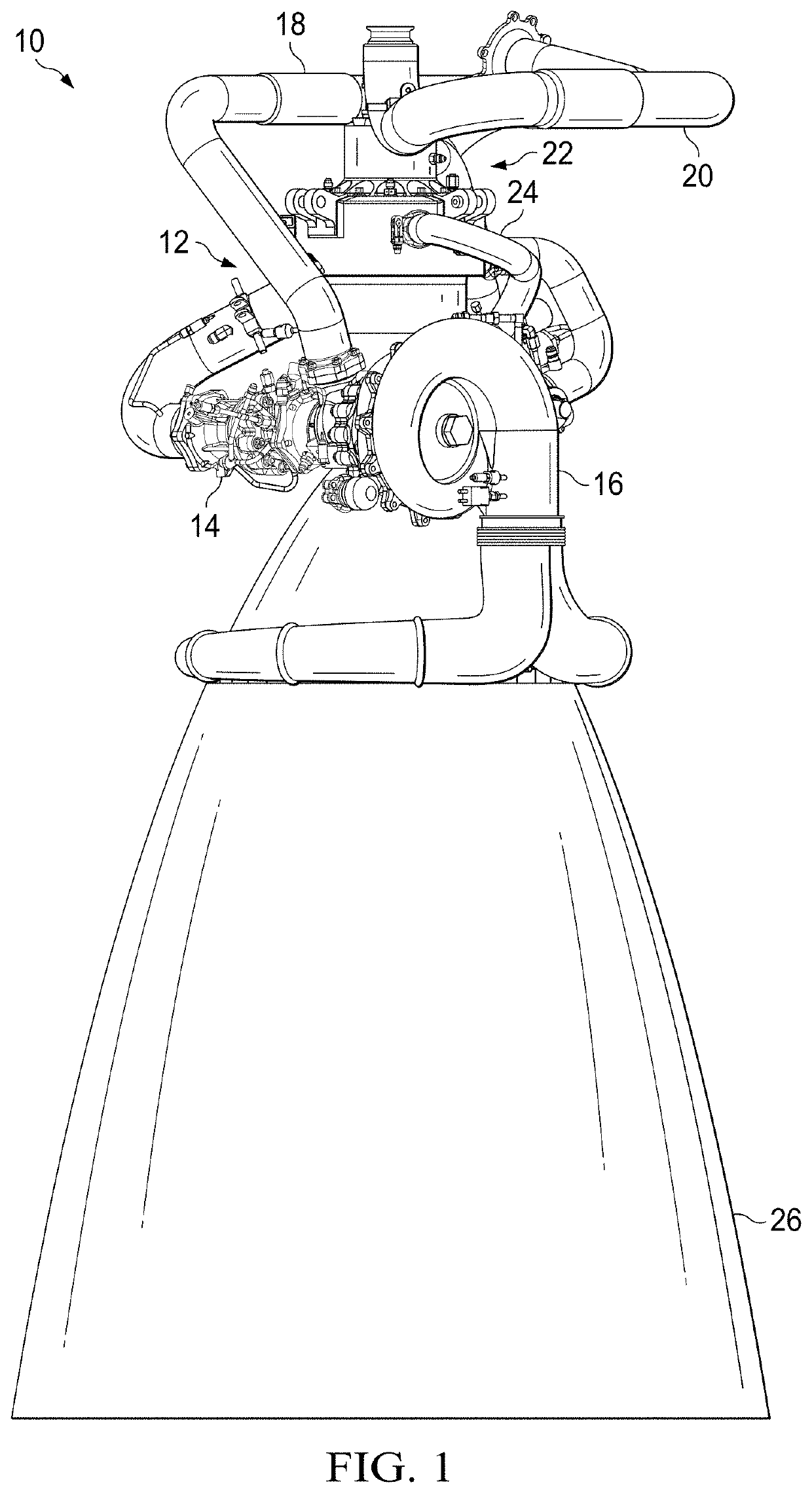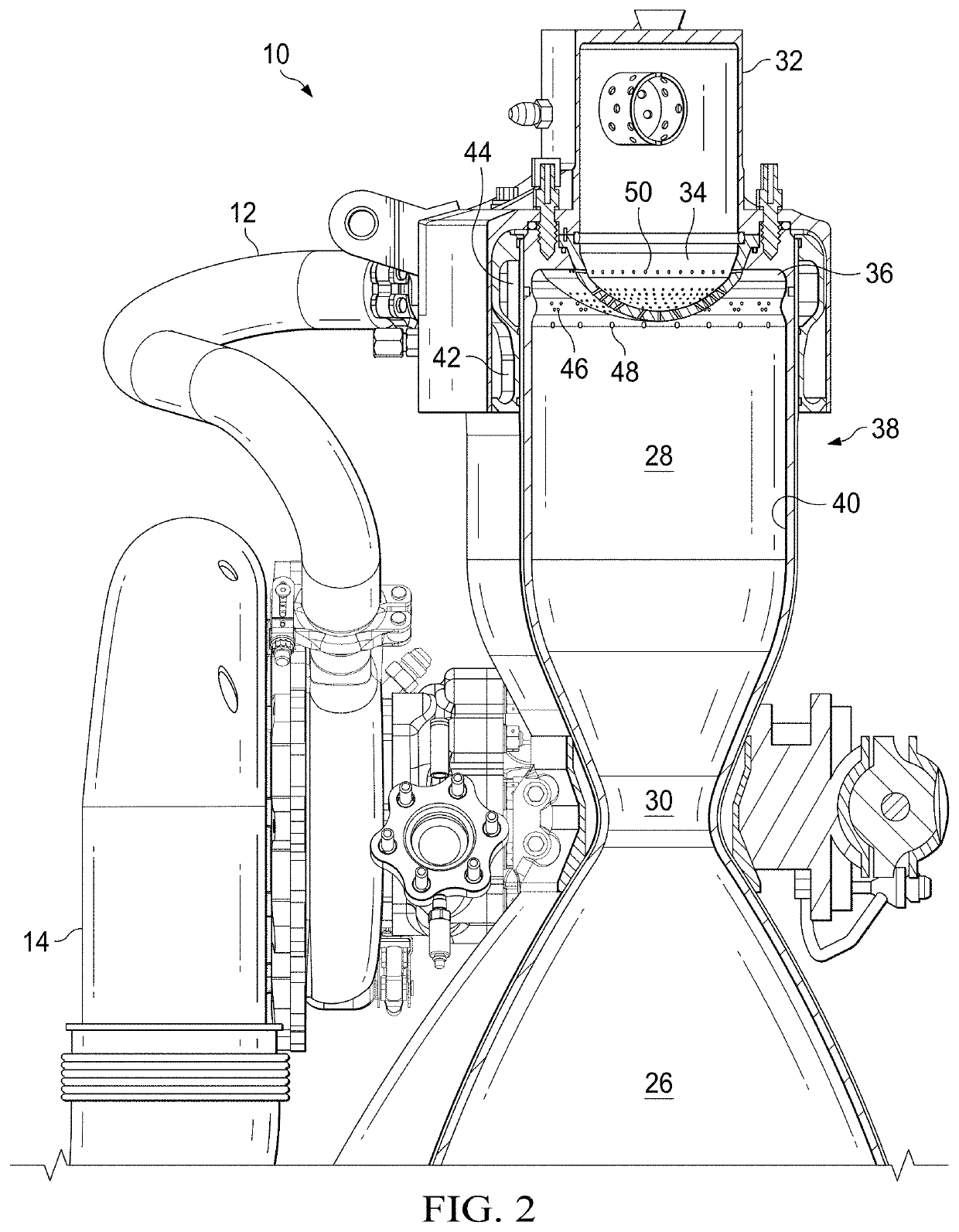Liquid rocket engine tap-off power source
a technology of liquid rocket engine and power source, which is applied in the field of liquid rocket engine tap-off power source, can solve the problems of separate liquid rocket engine, increase system cost and complexity, and increase the so as to reduce the disadvantages and problems, reduce the structural weight of the rocket, and efficiently burn the fuel injected
- Summary
- Abstract
- Description
- Claims
- Application Information
AI Technical Summary
Benefits of technology
Problems solved by technology
Method used
Image
Examples
Embodiment Construction
[0021]A liquid rocket engine generates thrust with a more simple and reliable tap-off auxiliary power supply. Heated gases generated in a combustion chamber are tapped through tap-off openings formed in the combustion chamber wall and redirected through a tap-off manifold to a turbopump that applies the heated gases to drive fuel and oxygen pumps that feed the combustion chamber. Tap-off thermal management is provided through a highly developed external heat transfer surface by nesting the tap-off manifold within the fuel manifold so that the tap-off manifold is regeneratively cooled by fuel flowing from the fuel source towards thruster body fuel channels. Within a combustion chamber having fuel injected from fuel port openings formed at cooling channels integrated in a side wall to impinge against oxygen injected at a headend towards the side wall, a toroidal vortex forms that allows an oxygen rich gas mixture to be drawn where the fuel port openings are disposed closer to the head...
PUM
 Login to View More
Login to View More Abstract
Description
Claims
Application Information
 Login to View More
Login to View More - R&D
- Intellectual Property
- Life Sciences
- Materials
- Tech Scout
- Unparalleled Data Quality
- Higher Quality Content
- 60% Fewer Hallucinations
Browse by: Latest US Patents, China's latest patents, Technical Efficacy Thesaurus, Application Domain, Technology Topic, Popular Technical Reports.
© 2025 PatSnap. All rights reserved.Legal|Privacy policy|Modern Slavery Act Transparency Statement|Sitemap|About US| Contact US: help@patsnap.com



